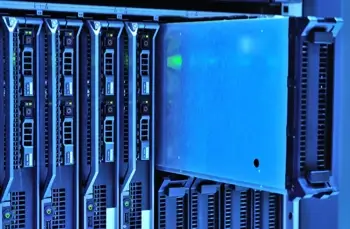What Is a Primary DNS Server?
Requesting a domain name or website on the Internet would be a hassle without the domain name system (DNS). DNS services resolve domain names to IPs, making it easy for us to remember how to access sites. In this article, we'll discuss the role of a primary DNS server and how to manage them.
What is a primary DNS server?
A primary DNS server is the main authoritative nameserver for a domain. Every domain owner has a primary server that handles translating human-readable domain names into IP addresses.
It's the first point of contact for a device, browser, or application that needs DNS resolution. A primary server stores full information about a domain. In other words, it contains original copies of all the domain's DNS records.
Registering a domain creates and stores a set of nameserver (NS) records on a primary DNS server. The NS records tell the Internet which servers to contact when someone wants to access your domain. They are managed by either a hosting company or a DNS service provider.
These records could include:
- A records, which map domain names to their corresponding IPv4 addresses. For example, an A record could map www.example.com to 192.0.2.1.
- MX records, which specify the mail servers responsible for receiving email on behalf of the domain. For example, mail.example.com might handle emails sent to [email protected].
- CNAME records, which alias one domain name to another. For instance, you could set blog.example.com to point to www.example.com.
When a server administrator needs to make changes to DNS records, they must do so on the primary server for the relevant zone. The updated records gradually propagate down the hierarchy to other DNS servers to ensure the new data is available across the Internet.
What is the role of a primary DNS server?
The role of a primary domain name system server is to host, manage, and update the zone file. At the heart of a DNS primary server's operation is the controlling zone file.

This file is a text-based database that contains all the DNS records for a domain. It is the blueprint that the DNS server uses to translate domain names into IP addresses and route Internet traffic accordingly.
When a change is made to a DNS record, the primary server updates the zone file. It then communicates these changes to secondary DNS servers. This process ensures all DNS servers associated with a domain have the latest information.
The zone file's accuracy and reliability are critical. Any errors in the zone file can lead to incorrect DNS resolutions, resulting in website downtime, email delivery failures, and other issues.
Managing the zone file is one of the primary DNS server's most important responsibilities.
How a primary DNS server works
Understanding how a DNS primary server works requires a step-by-step look at the DNS resolution process.
Whenever you enter a domain name into your browser, the browser begins by checking its local cache for the IP address. If the IP address is not cached, the browser sends a query to a recursive DNS resolver.
The recursive DNS resolver, managed by the user's Internet service provider (ISP), is expected to find the correct IP address for the domain name. It starts by querying the root DNS server so that it is to the appropriate top-level domain (TLD) server.
The TLD server then points the resolver to the authoritative DNS, or primary DNS, server for the domain. Upon receiving the query, the primary DNS server checks its zone file to find the corresponding IP address for the domain name.
Next, it returns this IP address to the recursive resolver, which passes it back to the user's browser. The browser can now use the IP address to connect to the web server and load the website.
The primary DNS server works to provide accurate information. Plus, it plays a crucial role in propagating DNS updates. It notifies secondary servers when changes are made to the zone file through zone transfers.
Configuration of a DNS primary server
Setting up a DNS primary server requires attention to detail. The configuration process involves selecting the appropriate software, defining the zone file, and taking care of the security of a server.
When configuring a primary DNS server, several key considerations must be taken into account:
- Choosing the right software. Various DNS server software options are available, such as BIND (Berkeley Internet Name Domain), Microsoft DNS, and PowerDNS. The choice of software depends on factors such as the operating system, scalability needs, and specific features required.
- Defining the zone file. The zone file must be carefully defined to include all necessary DNS records. Each record must be correctly formatted for proper DNS resolution. It is also important to set appropriate TTL values to balance the need for timely updates with the desire to minimize DNS query traffic.
- Securing the server. Implementing DNSSEC (Domain Name System Security Extensions), restricting access to the server, and regularly updating the server software are essential to protect against unauthorized access.
Security concerns about primary DNS servers
DNS primary servers are attractive targets for cyberattacks due to their critical role in the Internet's infrastructure. Attackers may attempt to compromise a primary DNS server to disrupt DNS resolution, redirect traffic to malicious websites, or steal sensitive information.
Several common attacks target DNS primary servers:
- DNS spoofing. Attackers corrupt the DNS cache with false information, causing the server to return incorrect IP addresses. This can redirect users to fraudulent websites or disrupt services.
- DDoS attacks. Attackers flood the DNS server with excessive traffic, overwhelming its resources and rendering it unresponsive. This can then lead to widespread service disruptions.
- Man-in-the-Middle attacks. Attackers intercept and modify DNS queries and responses, potentially redirecting traffic or stealing sensitive information.
Best practices for managing a primary DNS server
In order to protect your data and ensure that your DNS servers are assisting you in their full capacity, implement these best practices into your server activity.
- Regular backups. Perform regular data backups of the primary DNS server’s configuration and zone files. Regular backups protect against data loss and ensure quick recovery. In case of a server failure, you can restore the DNS data to its previous state without delay.
- Restrict access. Limit access to the DNS server to authorized personnel only. Use strong authentication methods to keep cybercriminals.
- Monitoring and logging. Use comprehensive monitoring and logging tools to track the performance of the primary DNS Server. These tools provide insights into query volumes, response times, and any unusual or suspicious activities. Effective monitoring helps you identify potential issues early; therefore, you can address security threats promptly.
- Redundancy and high availability. Enhance reliability by configuring secondary DNS servers for redundancy. If the Primary DNS server becomes unavailable, secondary servers can still respond to DNS queries.
- Security measures. Secure the primary DNS server to prevent unauthorized access or tampering. Implement access controls, firewalls, and conduct routine security audits. These measures help protect the integrity of your DNS records.
- Regular updates and patching. Keep the DNS server software up-to-date with the latest patches and updates. Regular updates address security vulnerabilities, improve performance, and introduce new features to secure DNS servers.
Common challenges with DNS primary servers
Despite careful configuration and management, DNS primary servers can encounter issues that disrupt DNS resolution. The most frequent issues are as follows.
- Incorrect DNS records. Errors in the zone file, such as incorrect IP addresses or misconfigured MX records, can lead to unwelcome DNS resolutions. Regular audits of the zone file can help correct these errors.
- Network connectivity problems. Issues with network connectivity prevent the primary DNS server from communicating with other servers. Verifying network connections is a good idea for troubleshooting connectivity problems.
- Zone transfer failures. Problems with zone transfers cause inconsistencies between the primary and secondary servers. Monitoring zone transfer logs is the solution to this problem.
- Server overload. High traffic volumes or DDoS attacks are launched to overwhelm the DNS server, rendering it unresponsive. Implementing load balancing and strategies can alleviate server overload.
Though these issues may be common, they're not guaranteed to happen to you. If you use the best practices outlined above, you'll keep your DNS servers running smoothly and cohesively.
Who uses primary DNS servers?
Network administrators, web hosting companies, and large organizations depend on primary domain name system servers for various purposes. Network administrators use primary servers to keep tabs on DNS records services remain accessible.
Web hosting companies store and update DNS information on primary servers to provide reliable access to their clients' websites.
Large organizations with multiple domains depend on primary servers to control DNS settings. They can update IP addresses or add new services with full authority.
Essentially, everyone running an online service uses a primary domain name system server to maintain control over their DNS infrastructure.
Is just one primary DNS server enough?
A single primary DNS server can suffice for a domain, but it presents a significant risk as a single point of failure. Issues like maintenance, updates, or power outages could leave the domain without a backup to handle DNS queries.
To mitigate this risk, it's advisable to have multiple secondary DNS servers. They can distribute the load, reduce stress on the primary DNS server, and thus ensure redundancy.
Frequently asked questions
What happens if a primary domain name system server fails?
If it fails, domain queries go unanswered, leading to service disruptions. Secondary servers can temporarily take over, but issues arise if they lack updated records.
Can a DNS server be the primary DNS and secondary DNS for the same zone?
Yes, a DNS server can be primary and secondary DNS for the same zone. This is known as a hidden primary configuration. It provides an extra layer of protection for the zone data, which then prevents accidental modifications or deletions on secondary servers.
How do you set up a primary DNS server?
You configure the server by installing DNS software, adding zone files with DNS records, and assigning it as the authoritative source for your domain.
How often should the primary DNS server be updated?
Update the primary domain name system server whenever there are changes to DNS records, such as adding or removing domains, IP addresses, or other critical information.
Can a primary DNS Server be located in the cloud?
Yes, a primary DNS Server can be cloud-based to offer scalability, reliability, and easier management.
How do I find my primary DNS server?
To find your primary server, use the command prompt tool to run the ipconfig command. Run ipconfig /all and then you'll see your DNS server listed in the results.

